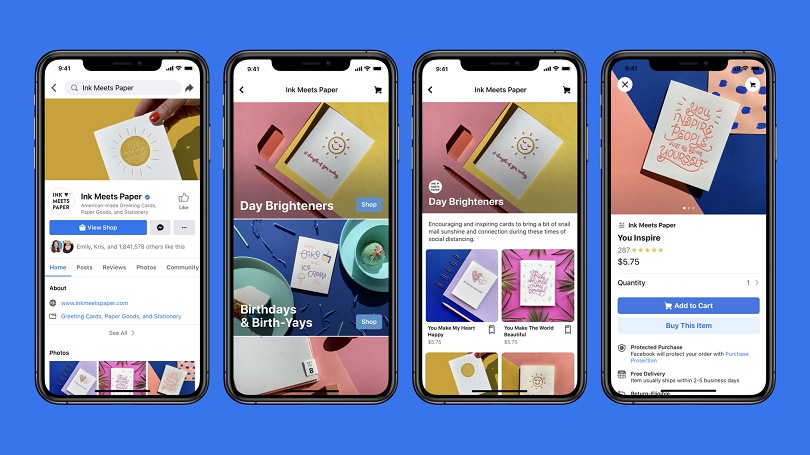What does the launch of Facebook Shops mean for retailers?

At the exact moment when brands and retailers are looking to engage their self-isolated customers online, social media giant Facebook last week announced it’s entering the e-commerce fray with its own retail platform – Facebook Shops.
The offering will let brands sell directly to customers through Facebook, Instagram and WhatsApp through “shopfronts”, as well as offer brands a new way to sell products through Facebook Live.
And while the service won’t be available in Australia for a few months, it is already available in other countries, such as the US and New Zealand.
Facebook Australia and New Zealand managing director Will Easton said the platform accelerated Shops’ development to help more brands and retailers get online as bricks-and-mortar retail continues to struggle.
Industry analysis firm UBS recently posited that online penetration in the retail sector will grow to around 17 per cent by 2024 – compared with the almost 11 per cent seen today.
This is likely to be accelerated by the impact of COVID-19. More and more customers are becoming comfortable shopping online, as the allure of overcrowded and potentially unhygienic public spaces wanes.
“It almost feels like they underplayed what it actually is,” retail strategist Salena Knight told Inside Retail.
“Up until now, it’s been quite difficult for a lot of businesses that aren’t at enterprise level to be able to get that omnichannel, seamless experience across platforms. And now they’re able to offer that across Instagram, WhatsApp, Facebook Messenger and Facebook. [It wasn’t] something I was expecting.
“I certainly didn’t expect it for free.”
And while the opportunities around selling direct-to-consumer through a platform with over two billion monthly users are clear, the fact is that until all the pieces are in place, customers will still need to be taken to a retailer’s website to transact.
Facebook Checkout, the business’s in-app payment system, is only in beta mode in the US and is not yet available anywhere else – although it will be a part of Shops once it is launched worldwide.
Additionally, while it has partnered with commerce platforms such as Shopify and BigCommerce in order to facilitate easier shopping, the details of what that entails are still vague.
Where to from here?
To Laura Jackson, managing director of Overdose Digital Melbourne, the fact that most people already have a Facebook, Instagram or WhatsApp account and use it to find new brands will be key to Shops.
“I think the power of the way we use Facebook individually and as a community… will be where the strength comes,” Jackson told Inside Retail.
“People are already accustomed to viewing content and engaging with brands on Facebook, and people are spending an enormous amount of time scrolling on those feeds.”
And although many are getting tired of influencer culture, should the ability to tag and sell products be opened up beyond official “store” pages, Shops could lead the way for a whole new way for that industry to flourish.
That fatigue, however, exists alongside the cynicism of a younger generation more likely to buy directly from brands that they trust and reflect their values. To Jackson, more sustainable and eco-friendly brands may be more likely to avoid the platform.
“The younger generation are definitely more sceptical, and that leads to a whole different discussion around shopping socially and minimalist living,” Jackson said.
“I think brands that are in that space are the ones that potentially don’t go down a Facebook Shops path, because they want to engage with their market authentically and sincerely.”
Comment Manually
You must be logged in to post a comment.

No comments